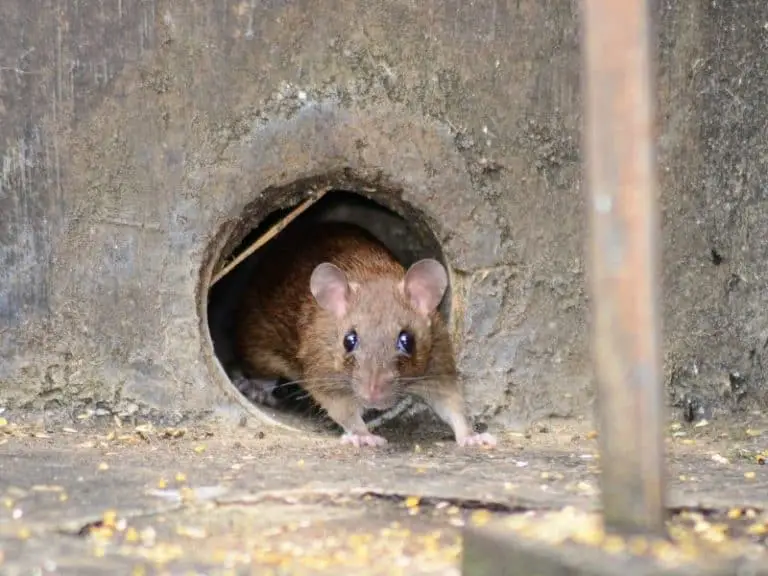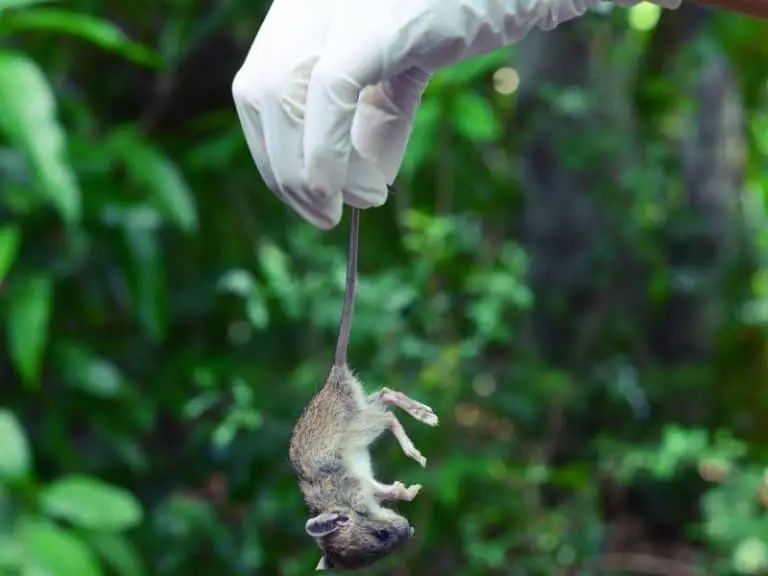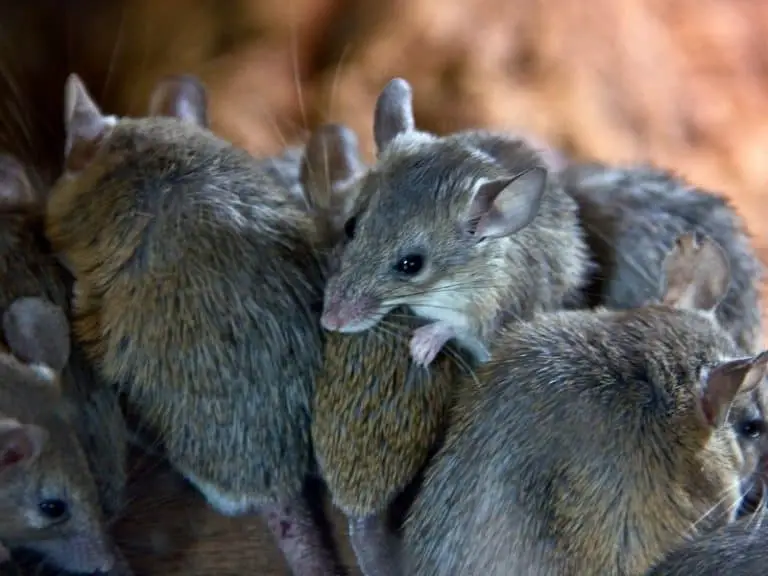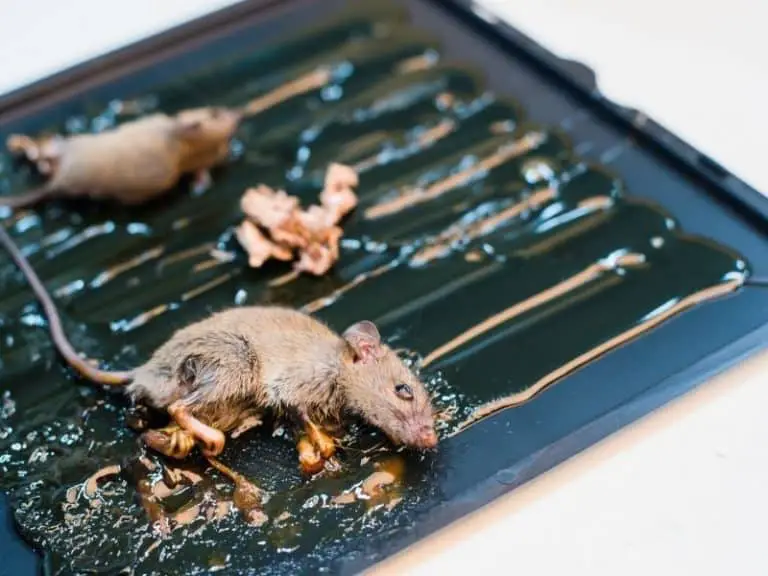How to Find Mice Nests in Garage In 7 Steps
It is hard to keep pests like mice away from the garage; you often leave the door wide open for minutes at a time. It won’t be too long that if you aren’t careful enough, mice will nest in your garage. How do you find those nests?
Finding mice nests in the garage requires performing an inspection of all the signs of typical mouse presence anywhere, including droppings, evidence of gnawing, rodent marks, runways, odors, and sounds. Identifying a nest is also important when you find it.
Often, a garage becomes a place for storage of excess material such as clothing, insulation, storage boxes, and other things which are attractive as nesting material for mice.
This post will give you the steps to identifying mouse activity in your garage that may lead you to a nest.
Inspect Mice Droppings Colors
Mice do leave their stuff behind in all sorts of places; after all, they are not toilet trained or house broken. One of these is their droppings, which they leave all around the garage.
Mouse droppings are small, between 3-8 mm. Mice are capable of producing a lot of them, and their presence is a tell-tale sign that mice are around.
The color of mice droppings also tells you something about the extent of the problem.
When freshly laid, mouse droppings are usually dark and soft, but over time they harden and lighten. This should tell you how long the problem has been happening.
The lighter the droppings you find, the more likely you are to note that this problem has gone on for some time now.
Mice droppings are not a good idea to have around, as they can carry bacteria, cause allergies, and potentially poison food if any are lying around in the garage.
This is, of course, apart from being unsightly and dirty. Check concealed spaces in particular if you are really concerned about droppings.
The best thing to do is to remove mice droppings. Do not use a vacuum cleaner or a broom to sweep or suck away droppings because this can stir up bacteria and viral material.
Instead, use gloves and a respirator or mask and carefully place the rat droppings in a plastic bag. Seal this bag and place this inside another one. Then dispose of it and disinfect the area.
Check for Evidence of Gnawing and Teeth Marks
In learning how to find mice nests in the garage, you must know that another sign of their presence is evidence that they have been chewing on something.
As we mentioned above, plenty of things are stored in garages that people are not careful about, such as clothing, insulation, storage boxes, and food. Mice love to gnaw on things for various reasons.
There are two reasons mice use their teeth to gnaw on material.
The first is that they gnaw on material, especially cloth, paper, cardboard, or other such items, so that they can gather the shreds for building or repairing their nests.
Seeing holes or signs of shredding is one indicator that they have gone through what you left in the garage for their nests.
The second reason is that mice have sharp teeth, and they need hard, inedible material to blunt them. This can include wood, solid plastic, and even wires and cables.
Detecting teeth marks on any of these materials should trigger alarm bells. This is even more so with electrical wiring in exposed conduits, which often occurs in garages.
Food packages, especially those made with cardboard or thinner types of plastic, are especially vulnerable to mice seeking food.
If in the hopefully unlikely event you store them in the garage and find that they have been torn open at the bottom and the food is spilling out, dispose of the package and its contents immediately.
A mouse may have gone through it.
Check for Mice Tracks and Marks
When you are looking for a mouse nest, one thing you must know is that mice rarely stray far from their nests. They are rarely more than 25 feet away from where they were born.
If they have managed to make their home in your garage, chances are that they spend most of their time roaming around it, and possibly your home!
How can you tell if they are making their way around the garage? Mice tracks are regular patterns of dirty smudges which are often found along a wall, or in the garage’s case, the garage door.
Why is this so? Mice have a poor sense of sight, and they often use walls to navigate around spaces.
As creatures of habit, they regularly use the same paths all the time.
Since garages are dusty places, it is easier to tell if mice tracks are there. If it is not that dusty, one suggested step is to take a powder and sprinkle it around the area where you suspect tracks are.
Come back the next day and hopefully you will find the traces of mice scurrying around. However, it might not even be needed.
Another sign of mouse activity related to the former are grease marks left behind on walls by mice, partly to mark off their territory.
Also, it is likely that you have seen a mouse path by the amount of stuff they leave behind, such as urine and droppings. They tend to leave their excess weight along the way as they go along.
Check Mice Urine and Odors
“It stinks in here” is something that you would not want to hear around the home.
In a garage, even with the door open for hours at a time for ventilation, it is likely that having mice around would lead you to that conclusion.
Yes, especially when there is a nest nearby. The cause, in most cases, is mice urine, but there is another one we will discuss.
Mice urine, like mice droppings, indicate whether mice are present.
While in small quantities mice urine does not stink, larger quantities, especially near nesting areas where plenty of mice are present, give off the smell of stale human urine.
It is especially rich in ammonia but is also a carrier of germs. When you have detected a good concentration of urine, clean and disinfect the area immediately.
The other time that a garage will stink due to a mouse is if it is a dead one. This is quite easy to notice; the smell of raw, decomposing flesh should give it away.
The death of a mouse in a garage also tells you something about the amount of time that a mouse infestation has been happening. It might also be a sign that a nest is nearby.
To remove a mouse cadaver, the best advice is to follow the steps we recommend for removing mice droppings.
Use gloves and a mask when removing them into a garbage bag, seal that bag, and place it in another bag.
When you have disposed of the deceased mouse, clean and disinfect the area immediately to prevent the disease from spreading. And be careful, dead mouse smell can be harmful to your health.
Listen for Mice Sounds
Have you ever heard strange noises at night from places you do not expect to hear it?
For instance, noises from behind walls or over your ceilings?
It may just be mice scampering around or doing all sorts of things inside your house. The garage may be no different. In fact, when mice come out at night to do things, the garage might be quite active.
The key to listening for mice activity is being careful to enter the garage and listen for tell-tale noises from around the garage. There are four basic types of mouse noises and what they indicate:
- Scratching noises indicate that mice are climbing, crawling, or digging. This is especially around conduits or pipes around the garage, or near their nests in the latter case.
- Gnawing noises indicate chewing, either of food or other material they are trying to gather. They may even be gnawing on wires, exposing them.
- Scurrying noises, which might be more difficult to tell given the nature of garage floors, indicate mice running around from one part of the space to the other. You may probably hear them from ceiling pipes or conduits where they scurry across.
- Squeaks and chirps, which indicate that mice are communicating to each other. This might be the easiest to detect, though it is worth noting that mice communicate sometimes in frequencies too high for the human ear to detect.
We give this step much later on because we know that the other steps would reveal more obvious signs of mouse activity.
However, it would be good to have more evidence that you have a lot of living mice in your garage space, and this may mean a nest is in there.
Check Closed Spaces for Mouse Nest
The most crucial step requires digging through your garage, once you’ve found (and hopefully cleaned up) most of the evidence).
Look into secluded and enclosed spots, old storage boxes, areas hidden behind standing cabinets, and large appliances stored in your garage. Chances are that you will find a mouse nest hiding somewhere in your garage.
A typical mouse nest is a round, ball-like structure, around six to eight inches in diameter, with a hole in the middle. This is true especially with common house mice.
The material used to build these structures include paper, cloth, string, insulation material, fabric, and other similar things. Sometimes, these nests are made of much looser stuff.
Mice can breed rapidly in those nests. A typical female mouse produces around five to twelve pups after bearing them for three weeks.
Since lots of mice tend to live there, and they rarely wander far from their places of birth, a nest must be near sources of food and water. Expect this to be the case when you are storing food in the garage.
Finding a nest will mean finding a lot of the things mice leave behind, especially urine and droppings. It will become a real mess if the infestation has gone on for a long time.
And since you may not have the skills, knowledge, or experience necessary to remove a mouse nest, it’s time to hand things over to a pest control expert.
Call a Pest Control Expert
In many of our posts, we have emphasized the importance of calling in a pest control expert when the situation is too much for the do-it-yourself pest control techniques to work.
This is especially the case with mice nests. You may be potentially dealing with dozens of mice, and piles of droppings and urine which require removing.
What a pest control expert will do varies from situation to situation, but they have dealt with mice nests in many different places.
They will be able to set up traps and use bait in such a way as to optimize their use to capture as many mice as possible.
They will also help you identify steps that you can take to keep mice out of the garage as much as possible.
One thing that they will emphasize is that prevention is key. They will be able to share specific steps with you to take care of your garage so that it will not be a home for mice.
A possible step is to get rid of or store carefully any material that may be used for making nests, especially clothing or insulation. Ask your pest control expert for other things you can do.
The best advice we can give is, if you find a mice nest in your garage, call the experts and don’t panic!
Related Questions
Is There Such A Thing As A Mice Proof Garage?
There is no such thing as a mouse-proof garage because garages are not built that way. With the door wide open, mice could get in. To prevent them from entering a garage, you may wish to seal cracks and holes around the garage and set traps nearby to discourage them from entering.
And finally, to prevent your things from being damaged by mice and rats, and to prevent them from coming in in the first place, check my post about the best mouse-proof storage containers for your garage.
Photo credit: ©canva.com/anastasastoeckmann
Medical Disclaimer: TheHomePestControl is a digital publisher and does not offer personal health or medical advice. The contents of this website are not intended to substitute for professional medical advice, diagnosis, or treatment.
Affiliate Disclaimer: As an Amazon Associate, I earn from qualifying purchases made on our website. If you make a purchase through links from this website, I may earn a commission at no additional cost to you.






